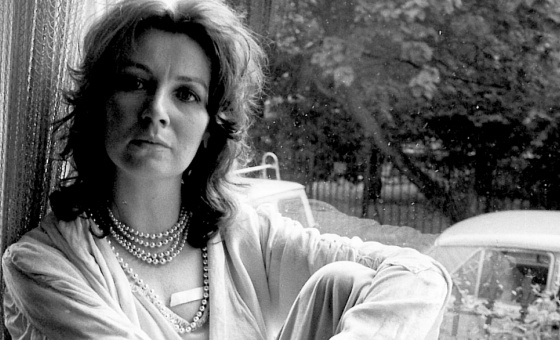This is the last article you can read this month
You can read more article this month
You can read more articles this month
Sorry your limit is up for this month
Reset on:
Please help support the Morning Star by subscribing here
JOHN STEVENSON was a man of many parts; a senior social worker, telecoms engineer, musician, editor, magician (a real one), web designer and trade union activist and someone who enjoyed reading German poets — in German. By any standards a class act, but more than that — John was an act for the class.
After a varied youthful career, including a spell as a pizza chef in Paris, John became a telecoms engineer, travelling the country building telephone exchanges. For many years afterwards Stevenson family road trips would involve John pointing to obscure buildings and saying “that’s one of mine.”
In the late 1970s John began a 40-year career in social work. A sensitive and skilful social worker, John used his knowledge and ability to create a culture that was child centred and compassionate, giving the staff that worked with and for him the ability to practice in an ethical and anti-oppressive way.
As a senior, he helped steer Edinburgh and Lothian’s social work teams through significant changes and was commended for his contribution to the inquiries and the re-structuring after the terrible death of four-year-old Caleb Ness.
With the turn to social work came involvement with first Nalgo and then Unison, where he finished a long shift as president of the city of Edinburgh branch. In a crowded field of accomplishments, perhaps John’s biggest contribution to the union was being integral to Unison Scotland’s communications and campaigning.
For 30 years, John edited Scotland in Unison, the union’s newspaper. He was fiercely proud that it was lay edited and produced, to a highly professional standard. There were suspicions he was still editing it in retirement, from his hospital bed.
Elected year after year to chair the union’s campaigns and communications committee, generations of trade union activists learned how to put Unison’s message across at courses devised or overseen by John.
He was always supportive of activists coming through. The learning didn’t stop when the folders were put away and the laptops were shut. Whether he was aware of it or not he was always teaching.
Going for a drink with John after a course or a meeting was an education in itself. John had a seemingly inexhaustible fund of stories and anecdotes about labour movement life. These were frequently hilarious, not least when the humour came at his own expense.
John put a seemingly boundless energy and intellectual curiosity to work for the union and the wider labour movement. John was an innovator, he believed unions should use every modern technique to improve the lives of ordinary working people.
He took Unison into the digital age. John learned how to write code and Unison Scotland’s website was John’s baby. He wrote blogs. He pioneered Unison’s social media.
This grew and developed giving Unison Scotland an online presence — run and maintained by a lay activist that put the professionally sustained efforts of other unions into the shade.
John always balanced his trade union activities with maintaining his role and responsibilities as an increasingly senior social worker. That said there was the incident in 1993 when one of managers querying why John wasn’t in the office was informed: “He’s away meeting Nelson Mandela.”
A youth spent as bugler in Boys Brigade was put to use as a student when John played trumpet in dance bands during the summer.
Between sets he began performing conjuring tricks, a skill he developed to such an extent he was invited to join the Edinburgh branch of the Magic Circle. In later life he could still delight friends with a disappearing handkerchief, a card trick and was famous for producing a lit cigarettes from his pocket.
More controversially perhaps he was proud to describe himself as a co-owner of Hearts FC — by virtue of having bought a few shares in the club — a status he reinforced by installing some seats from the old Tynecastle stadium as garden furniture.
Retirement for John was more a case of change of focus than of pace. He kept up his writing, not least for the Morning Star. To no-one’s surprise this committed internationalist took on a role as a trustee of the Nelson Mandela Scottish Memorial Foundation, for whom he was still writing material just a few weeks ago from his hospital bed.
It wasn’t all work though, some time was spent building an increasingly detailed model railway — pictures of which he would publish with childlike delight.
When John recently made it public that his health would not be getting better, he did so with typically self-deprecating wit.
“Much gratitude for the NHS community and hospital staff, from cleaner to consultant, who have been brilliant (apart from the patronising one who assumed ‘old people’ had resigned the right be spoken to as an adult — or maybe she just didn’t like my jokes).
“For me, the best staff one-liner was when I greeted one regular clinician with: ‘How are you today?’ to get the reply: ‘Better than you, I suspect.’”
The labour movement, as John would be the first to say, is a collective endeavour in which we all have a part to play. Few of us though play those parts with quite the dedication and effectiveness as John Stevenson has. Fewer still with as cheeky a grin or as much panache.
He is survived by his wife, Morag, and his children Seonaid and Robbie.
The family invites anyone touched by John’s life to an open celebration at 1pm on Saturday, April 30, at the Royal College of Physicians of Edinburgh 9 Queen Street, EH2 1JQ.










